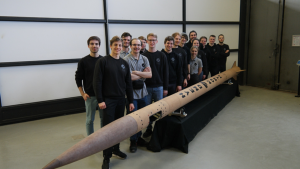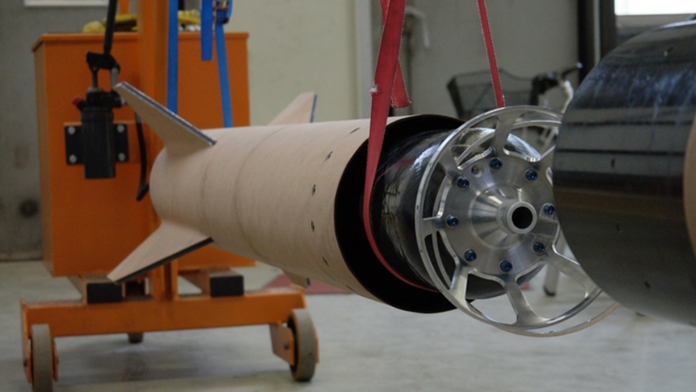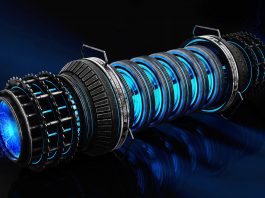The Hybrid Engine Development (HyEnD) team at the University of Stuttgart has spent three years developing, testing, and manufacturing its hybrid rocket.
Later this month, the hybrid rocket will launch into space from the Esrange rocket launch site near Kiruna in Sweden. If the mission is successful, the team will set a new world altitude record for a student-built rocket.
The previous altitude record, set by the same team in 2016, boasts an impressive figure of 32km. Describing the rocket, which is 7.80m long and weighs around 70kg, Max Öchsle, HyEnD’s project manager, said: “It is one of the most powerful and advanced student-built rockets in the world.”
Breaking impressive records
The students also hope that the hybrid rocket will cross the boundary into space at an altitude of 100km – an extremely impressive height for a rocket. In addition to the world record for hybrid rockets, this also makes the world record for student-built rockets in general possible.
This means that the previous record for this, which stands at 103.6km and was set by the University of Southern California (USCRPL) team in 2019, is well within reach. Although reaching this target depends on numerous factors, such as the weather, Öchsle commented: “The world record is within our reach. We could indeed beat it.”
The window for the record attempt is scheduled between 14 April and 25 April. However, the schedule could be changed at short notice, so HyEnD is providing regular updates on this. Moreover, the Swedish Space Agency is planning to stream the hybrid rocket launch live on its YouTube channel.
Counting down to the hybrid rocket launch
“The launch of the hybrid rocket will be a special moment for me.” Over the past three years, a lot of blood, sweat, and tears have gone into this project,” said Öchsle.
“The countdown to the launch will undoubtedly be exciting. But we are confident that everything will go according to plan. Of course, I am most looking forward to the moment when the rocket takes off.”
To make sure the launch goes safely and smoothly, the team has created two identical rockets, which will be on site. This is so a backup is available in case something goes wrong, but also because this type of rocket project is quite ambitious for a group of students.
For the first flight of an untested hybrid rocket, there are restrictions on the launch angle and, therefore, on the flight altitude. If the first flight goes well, the group hopes the rocket will fly higher on the second launch.
What makes this rocket unique?
The hybrid rocket, named N2ORTH, has a hybrid engine that uses solid fuel and liquid nitrous oxide. The name N2ORTH alludes to both nitrous oxide (N2O), which is used as an oxidiser, and the launch site in the North. In order to make it as light as possible, the rocket was built almost entirely of composite materials.

“We are particularly proud of the engine, which we developed ourselves. With its thrust of up to 1.5 tonnes, it is one of the world’s most powerful and efficient student-made engines,” Öchsle stated.
He added: “Another special feature of the hybrid rocket is its parachute, which must be able to withstand supersonic speeds. Because no commercial parachutes are available for these requirements, we made it ourselves.”
Due to high flight speeds, the rocket shell is exposed to enormous temperatures. The structural parts were therefore laminated with a high-temperature epoxy system developed in-house. Additionally, the hybrid rocket also has a thermal protection layer made of cork. The students manufactured the majority of the components themselves in the workshops at the University of Stuttgart.
The development of this hybrid rocket was made possible by the STERN student experimental rocket programme, funded by the German Aerospace Center (DLR). The project, which began in autumn 2019, will be completed by the launch of the hybrid rocket in Sweden.









